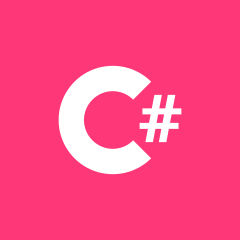在使用Prism的MVVM应用程序中,每次选择TabItem时如何运行方法
尽管有种感觉,这很容易,但我一直在尝试实现这一点,但到目前为止还没有做到。
困难来自以下事实:我已经使用MVVM模式实现了WPF应用程序。现在,这是我对模式和框架的第一次尝试,因此几乎可以保证在尝试遵循MVVM准则时我犯了错误。
我的实施
我有三个视图及其各自的ViewModels(使用PrismAutoWireViewModel方法连接)。的MainView具有TabControl带有两个TabItems,各女巫的包含Frame与所述容器Source设置到其它两个中的一个View第 以下代码是的摘录MainView:
<TabControl Grid.Row="1" Grid.Column="1">
<TabItem Header="Test">
<!--TestView-->
<Frame Source="View1.xaml"/>
</TabItem>
<TabItem Header="Results">
<!--ResultsView-->
<Frame Source="View2.xaml"/>
</TabItem>
</TabControl>
我的问题
每当有人更改为特定的东西时TabItem,我都想运行一种方法来更新其中包含的WPF控件之一View。该方法已经实现并绑定到Button,但是理想情况下,不需要任何按钮,我希望可以使用某种方法Event来实现此目的。
我先感谢所有帮助。
 GCT1015
GCT1015浏览 344回答 3
3回答
-

月关宝盒
这就是我满足这种要求的方式:视图: <Window.DataContext> <local:MainWIndowViewModel/> </Window.DataContext> <Grid> <TabControl Name="tc" ItemsSource="{Binding vms}"> <TabControl.Resources> <DataTemplate DataType="{x:Type local:uc1vm}"> <local:UserControl1/> </DataTemplate> <DataTemplate DataType="{x:Type local:uc2vm}"> <local:UserControl2/> </DataTemplate> </TabControl.Resources> <TabControl.ItemContainerStyle> <Style TargetType="TabItem"> <Setter Property="Header" Value="{Binding TabHeading}"/> </Style> </TabControl.ItemContainerStyle> </TabControl> </Grid></Window>当它具有uc1vm时,它将被模板化到视图中的usercontrol1中。我将绑定到全部实现一个接口的视图模型的集合,因此我确定可以将其强制转换并调用方法。窗口的主要视图模型: private IDoSomething selectedVM; public IDoSomething SelectedVM { get { return selectedVM; } set { selectedVM = value; selectedVM.doit(); RaisePropertyChanged(); } } public ObservableCollection<IDoSomething> vms { get; set; } = new ObservableCollection<IDoSomething> { new uc1vm(), new uc2vm() }; public MainWIndowViewModel() { }选择选项卡后,所选项目的设置器将被传递新值。强制转换并调用方法。我的界面非常简单,因为这只是说明性的:public interface IDoSomething{ void doit();}一个示例视图模型,它只是说明性的,并没有做很多事情:public class uc1vm : IDoSomething{ public string TabHeading { get; set; } = "Uc1"; public void doit() { // Your code goes here }}
 随时随地看视频慕课网APP
随时随地看视频慕课网APP
相关分类

 C#
C#